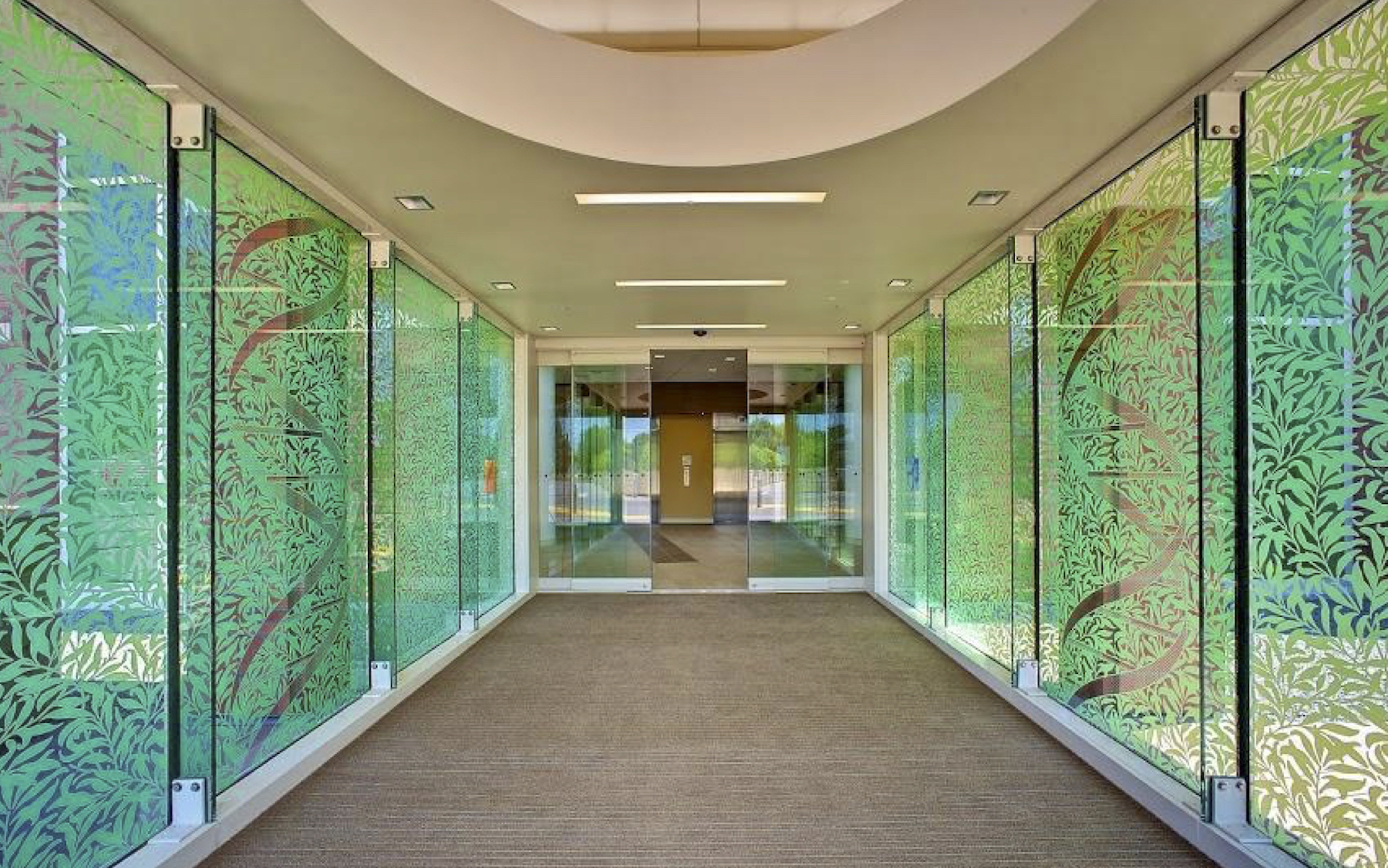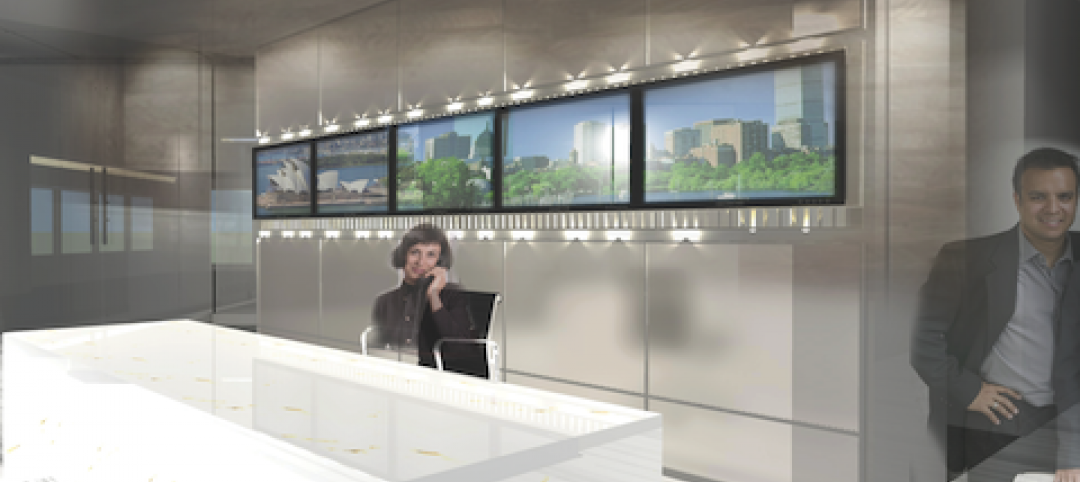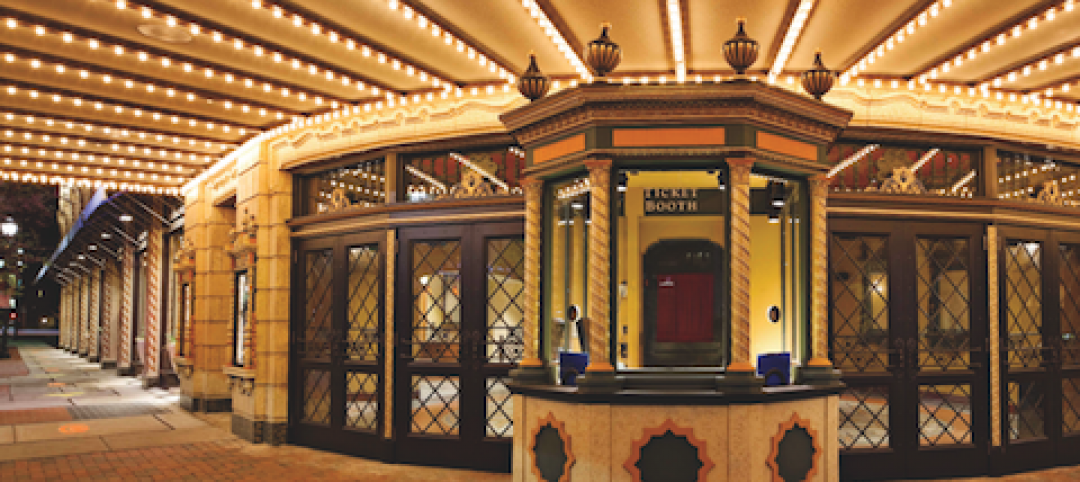In the world of fine art, a master painter begins with canvas selection. A linen canvas is nearly always selected over cotton because nothing delivers the artist’s authentic vision quite like linen.
Similarly, with glass.
While it’s true glass manufacturers have made remarkable strides in recent years across a broad front, including energy efficiency, there remains major divisions in the way glass manufacturers approach clarity and light transmission.
We’re talking, of course, about conventional clear glass and low-iron glass.
Less Green, More Clarity
The metaphor of cotton and linen canvas is apt in glass conversations. As good as today’s conventional “clear” glass is, it falls significantly short of low-iron glass’s highest potential clarity (87 percent less green tint) and generous 91 VLT (visible light transmission) rating.
In fact, there is no industry standard specification criteria for “clear” glass, the clarity of which can vary broadly between batches and manufacturers.
Small wonder low-iron glass is the glass of choice for interiors and exteriors across a wide array of iconic structures, including the Amazon Spheres, Bullitt Center, Fallingwater, Calgary Central Library, UCSD Jacobs Medical Center, among many other projects worldwide.
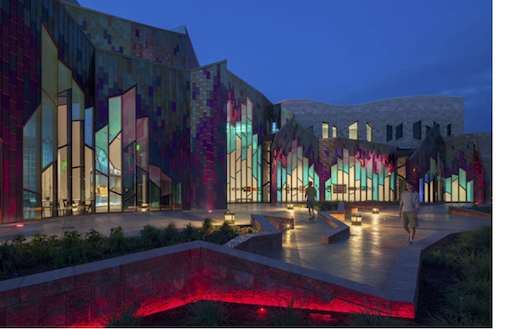 Extreme Neutrality as Aesthetic
Extreme Neutrality as Aesthetic
Historically, the purest low-iron glasses have been prized for their ability to step away from the limelight (literally, as it turns out) and showcase daylight and exterior views. “The clarity of the glass allows for it to appear invisible, a feature [Frank Lloyd] Wright admired,” explains Scott W. Perkins, director of preservation and collections for Fallingwater. Wright specified one of the industry’s pioneering low-iron glasses in his original specification for his iconic house.
However, the extreme neutrality of low-iron glass is increasingly in demand for decorative interior design applications. Its minimal green and pure clarity provides a truly neutral substrate for dynamic patterns, colorful designs and more.
Bernard Lax agrees. Lax, founder and head of Pulp Studio, a widely respected fabricator of decorative glass, says his team always specifies low-iron glass “… for projects where the aesthetic is the driving force to maintain color neutrality.”
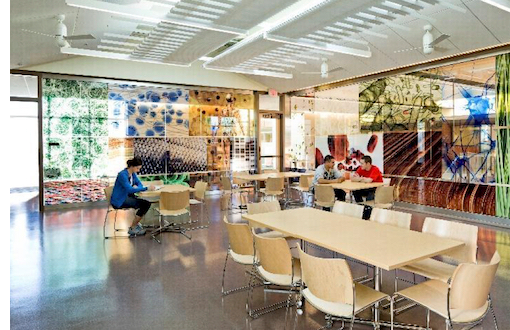 Five Decorative Applications
Five Decorative Applications
Low-iron glass is increasingly specified for decorative features, doors and partitions, stairs and handrails, shower and bath enclosures, kitchens and backsplashes, security cases and displays, entrances and storefronts, and anywhere maximum color fidelity enhances artistry. Starphire Ultra-Clear® Glass by Vitro Architectural Glass is the design industry’s de facto low-iron standard, distinguished by its distinctive blue beveled edge and proprietary low-iron formula.
- Dichroic Glass. Dichroic is an effect that creates brilliant color shifts and movement within a single lite of glass. Effects can be enhanced by using textured glass as one or more of the lites or muted with acid-etching. Dichroic glass is known for its chameleon-like effects, where the glass’s transmitted and reflected colors can appear different.
- Digital Ceramic Printing. An image is printed directly on glass. Virtually any full-color design is printable on low-iron glass.
- Acid-Etched Glass. Offers a surface finish that diffuses transmitted light and reduces glare with a frosted appearance, often in a pattern. It is ideal for dividing walls, wall coverings, office partitions, shower and bath enclosures, floors, stairs and railings and doors. Acid-etching also is frequently used to create artistic patterns and in bird-friendly glass, which is increasingly in demand as many municipalities pass legislation requiring bird-friendly building design.
- Ceramic Frit. A permanent, opaque coating that is fired into the glass, it offers pattern art ranging from simple shapes and gradients to intricate designs. Combine ceramic frit with coatings, tints, and reflected glass. Ceramic frit is frequently used in spandrel glass.
- Other Applications. Polished edge glass and laminated glass with tinted or patterned polyvinyl butyral interlayers offer additional decorative options.
When the project calls for a superior canvas of glass for dynamic design ideas, make low-iron glass a primary consideration. Request a sample of patented Starphire Ultra-Clear® Glass and experience the difference for yourself.
Related Stories
| Oct 13, 2010
HQ renovations aim for modern look
Gerner Kronick + Valcarcel Architects’ renovations to the Commonwealth Bank of Australia’s New York City headquarters will feature a reworked reception lobby with back-painted glass, silk-screened logos, and a video wall.
| Oct 13, 2010
New health center to focus on education and awareness
Construction is getting pumped up at the new Anschutz Health and Wellness Center at the University of Colorado, Denver. The four-story, 94,000-sf building will focus on healthy lifestyles and disease prevention.
| Oct 13, 2010
Community center under way in NYC seeks LEED Platinum
A curving, 550-foot-long glass arcade dubbed the “Wall of Light” is the standout architectural and sustainable feature of the Battery Park City Community Center, a 60,000-sf complex located in a two-tower residential Lower Manhattan complex. Hanrahan Meyers Architects designed the glass arcade to act as a passive energy system, bringing natural light into all interior spaces.
| Oct 13, 2010
Community college plans new campus building
Construction is moving along on Hudson County Community College’s North Hudson Campus Center in Union City, N.J. The seven-story, 92,000-sf building will be the first higher education facility in the city.
| Oct 13, 2010
County building aims for the sun, shade
The 187,032-sf East County Hall of Justice in Dublin, Calif., will be oriented to take advantage of daylighting, with exterior sunshades preventing unwanted heat gain and glare. The building is targeting LEED Silver. Strong horizontal massing helps both buildings better match their low-rise and residential neighbors.
| Oct 12, 2010
Holton Career and Resource Center, Durham, N.C.
27th Annual Reconstruction Awards—Special Recognition. Early in the current decade, violence within the community of Northeast Central Durham, N.C., escalated to the point where school safety officers at Holton Junior High School feared for their own safety. The school eventually closed and the property sat vacant for five years.
| Oct 12, 2010
Richmond CenterStage, Richmond, Va.
27th Annual Reconstruction Awards—Bronze Award. The Richmond CenterStage opened in 1928 in the Virginia capital as a grand movie palace named Loew’s Theatre. It was reinvented in 1983 as a performing arts center known as Carpenter Theatre and hobbled along until 2004, when the crumbling venue was mercifully shuttered.
| Oct 12, 2010
Cell and Genome Sciences Building, Farmington, Conn.
27th Annual Reconstruction Awards—Silver Award. Administrators at the University of Connecticut Health Center in Farmington didn’t think much of the 1970s building they planned to turn into the school’s Cell and Genome Sciences Building. It’s not that the former toxicology research facility was in such terrible shape, but the 117,800-sf structure had almost no windows and its interior was dark and chopped up.
| Oct 12, 2010
Building 13 Naval Station, Great Lakes, Ill.
27th Annual Reconstruction Awards—Gold Award. Designed by Chicago architect Jarvis Hunt and constructed in 1903, Building 13 is one of 39 structures within the Great Lakes Historic District at Naval Station Great Lakes, Ill.
| Oct 6, 2010
Windows Keep Green Goals in View
The DOE's National Renewable Energy Laboratory has almost 600 window openings, and yet it's targeting LEED Platinum, net-zero energy use, and 50% improvement over ASHRAE 90.1. How the window ‘problem’ is part of the solution.


